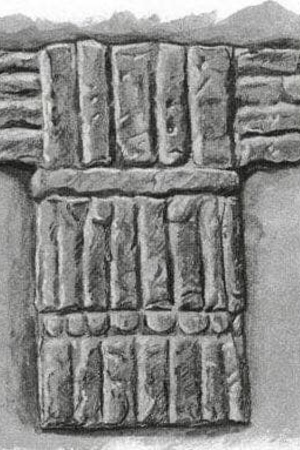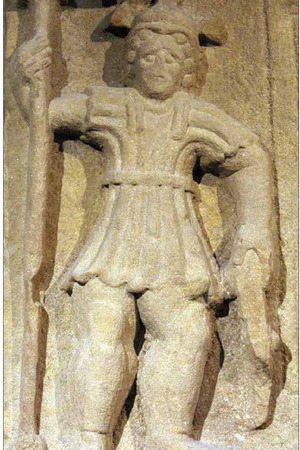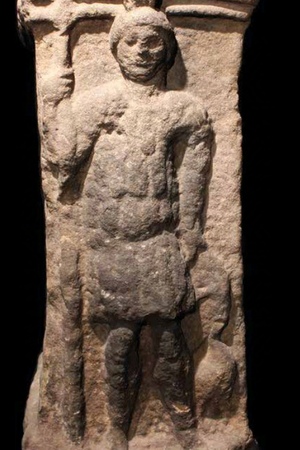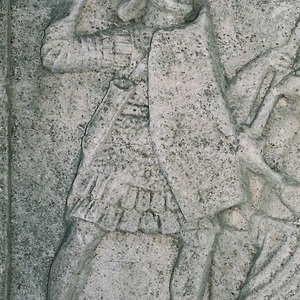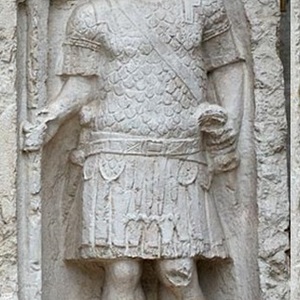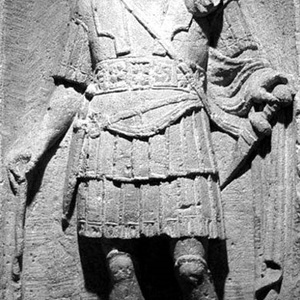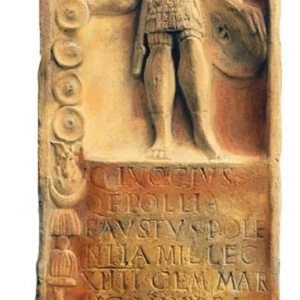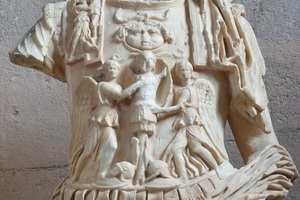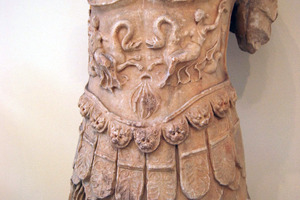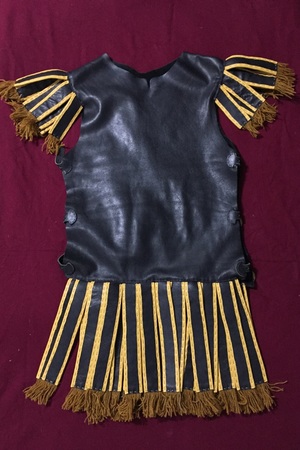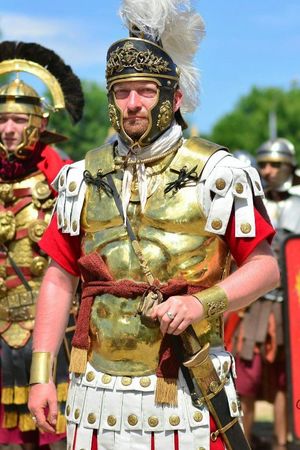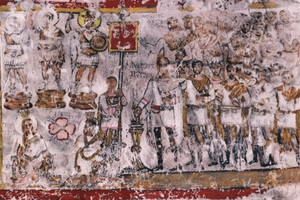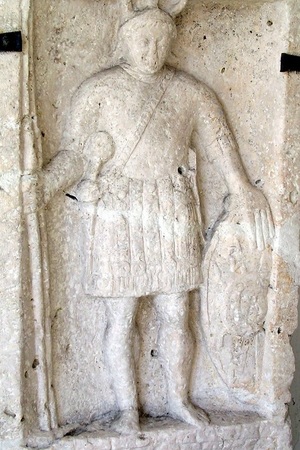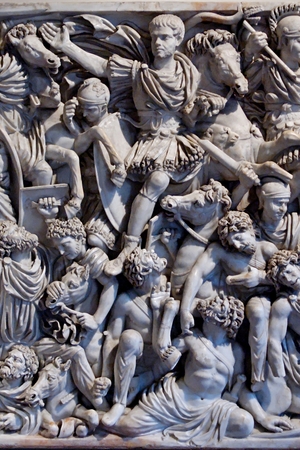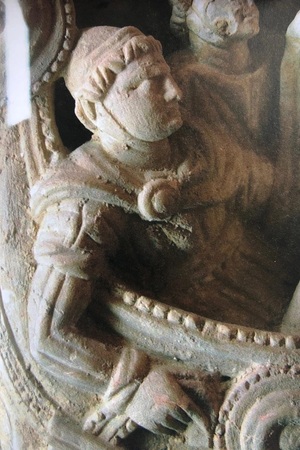Subarmalis
Subarmalis (Latin: subarmalis) was an ancient undergarment worn by soldiers. It did not provide direct protection to its wearer, but without it, the functional characteristics of armor would significantly deteriorate. The subarmalis provided increased durability, comfort, and shock absorption. It could be worn with various types of loricae, such as hamates, musculates, squamates and segmentates. Subarmalis was made of leather or fabric (wool, linen) and could consist of multiple layers of material.
It should be noted that on surviving ancient reliefs, there are fragments where warriors are depicted without armor over their subarmalis. It is evident that the undergarment depicted is not made of leather but rather quilted. However, such depictions usually date to a later period than the 1st or 2nd century AD.
Types of subarmalis
Since no preserved subarmalis exists, the exact construction is unknown. However, visual sources provide some information about their possible design and types. Based on the characteristics of the segmentata lorica, it can be concluded that its use without a subarmalis would not be feasible. At the same time, the majority of legionaries depicted wearing segmentata armor are shown without an undergarment. This can be explained by the fact that the subarmalis did not necessarily have pteruges (see below), which are primarily depicted on reliefs. It can be reasonably assumed that in this case, legionaries wearing segmentata armor had a simple subarmalis in the form of a vest, providing cushioning for both the wearing process and enemy strikes.
Pteruges (Latin: Pteruges, pteryges, from Ancient Greek Πτέρυγες - "wings," "feathers," cf. "archaeopteryx") were fabric or leather strips hanging from the subarmalis on the thighs and shoulders. Sometimes, decorative fringes were attached to the ends of the pteruges, which were more common among officers but occasionally found on legionaries as well. Fringes could be woven from wool or cut from leather.
The exact method of attaching the subarmalis is unknown. There are theories about tying it on one or both sides (with the left side, facing the shield, being the most probable in the first case), at the back, or using buckles.
On reliefs, various types of subarmalis can be seen, both with a single row of pteruges and with two rows. Moreover, it's not always the case that two rows of strips are present on the shoulders and waist simultaneously. For high-ranking officers (legates), subarmalis garments adorned with patterns, sometimes with cast metal plaques, and an additional third row of rounded pteruges at the waist are characteristic.
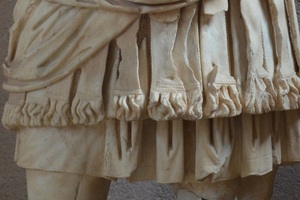 Fragment of a statue of a senior officer with lower rows of pteryges (Julian Basilica). Archaeological Museum of Corinth, Greece, second half of the 2nd century AD
Fragment of a statue of a senior officer with lower rows of pteryges (Julian Basilica). Archaeological Museum of Corinth, Greece, second half of the 2nd century ADSumming up the above, subarmalis garments can be divided into three groups:
- Regular soldier's (legionnaires, auxiliaries);
- Officer's (centurions, banner group);
- High-ranking officers (legates, emperors).
Reenaction
Subarmalis garments could be worn by any members of the Roman army. The simplest undergarments were worn by legionaries and auxiliaries, and for the reconstruction of these warriors, a subarmalis without pteruges can be used. Officer's subarmalis differed from the legionary's and often had multiple rows of pteruges adorned with fringes. The pteruges themselves could be significantly longer than those worn by legionaries. The most complex variation was the lavishly decorated subarmalis of high-ranking officers, which could have three rows of pteruges and be embellished with rich decorations, including possibly cast metal ornaments. Subarmalis garments were made of leather, wool, or linen, and to achieve a shape similar to the depictions on reliefs, it is recommended to make the pteruges from multiple layers of material. Edging the pteruges around the perimeter can contribute to greater rigidity.
Related topics
Legionnaire, Auxiliaries, Lorica hamata, Lorica musculata, Lorica squamata, Lorica segmentata, Legate, Centurion
List of literature
M.A. Wijnhoven. European Mail Armour. Amsterdam University Press, Amsterdam, 2022
Roman centurions 753-31 BC. Raffaele D'Amato. Osprey Publishing

 Gallery
Gallery






